Double Exposure Blackjack | When confronting a formidable dealer’s 10 in the intricate game of blackjack, the choices are laden with probabilities and uncertainties. The looming question of whether the dealer possesses a solid hand or is teetering on the brink of a bust is shrouded in ambiguity. The enigma deepens as the veil conceals the cards that destiny shall bestow upon you. Amidst this labyrinth of unknowns, one fact remains certain – the odds stand firmly in favor of the decision to hit.
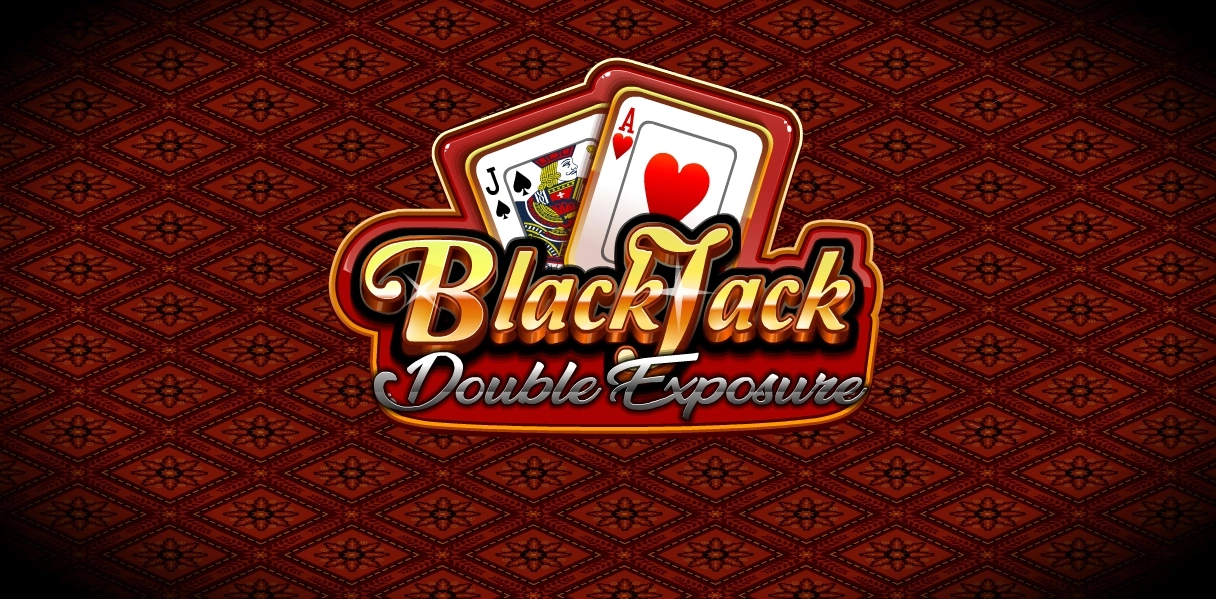
Diving Deeper: The Unveiling of Double Exposure Blackjack
In the realm of blackjack’s myriad variations, a distinct game emerges – Double Exposure Blackjack. Here, the realm of speculation fades into oblivion. Each card that the dealer wields is laid bare, revealing the composition of that menacing dealer’s 10. The mystery dissipates as you stand armed with precise knowledge, granting a substantial advantage to your strategic maneuvers.
A Tug of Tradeoffs: The Intricacies of Double Exposure Gameplay
Within this novel blackjack landscape, the rules present a unique blend of challenges and opportunities. No longer does a tie result in a mere push; instead, the dealer emerges triumphant, unless the tie is graced by the elusive blackjack. Nuances abound – in some domains, tied blackjacks concede, while others witness players basking in the glory of their victorious blackjack ties.
Navigating the Uncharted Waters: Unconventional Decision Points
Prepare to step into the realm of the uncomfortable, where calculated risk-taking becomes the norm. An extraordinary scenario unfolds when your hand boasts a resplendent 20 while the dealer mirrors your glory. Against conventional wisdom, you must summon the audacity to take a hit; falter, and the victory slips through your fingers. Conventional wisdom crumbles as the absence of a 21 vs. 21 confrontation reshapes the battlefield. A two-card 21 metamorphoses into the elusive blackjack, and the dealer’s blackjack commands a halt to the proceedings. The dealer, in turn, weaves 21s from three cards or more, unfurling a saga of strategy beyond the ordinary.
Peering into the Balance Sheet: Payouts and Limitations
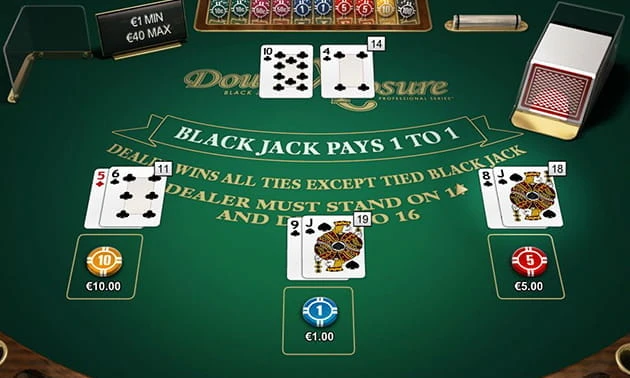
Yet, the allure remains irresistible – the revelation of every dealer card beckons. Although not omnipresent, Double Exposure occasionally graces select casinos, both the expansive live emporiums and the digital domains that grant players a trove of choices. The tapestry of winnings is rewoven – player blackjacks fetch even money, eschewing the traditional 3-2 or 6-5 payouts. Constraints emerge as pair-splitting unveils its magic just once per table, and doubling down finds refuge within the confines of totals 9 through 11 or the narrow bounds of 10 and 11.
Chronicle of Genesis: The Birth of Double Exposure
Venture into the annals of blackjack history, and you’ll uncover the origins of Double Exposure in the late 1970s, within the premises of Bob Stupak’s legendary Vegas World. Once nestled on the grounds where the Stratosphere now holds its reign, this pioneering casino bore witness to the birth of a phenomenon. From these humble beginnings, Double Exposure spread its wings, finding sanctuaries in tribal casinos, particularly those nestled beneath the Grand umbrella, and eventually venturing into the boundless realm of online gaming. A plethora of monikers beckon, each reflecting a unique facet – Dealer Disclosure, Face Up 21, and variants bearing the Grand insignia.
The Dance of the Edge: Unveiling the House Advantage
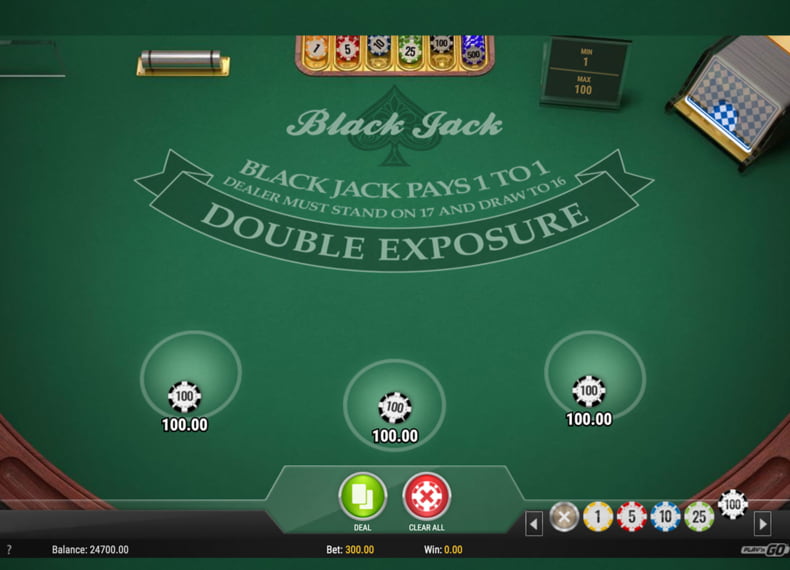
While the house inevitably casts its shadow, the ability to peer behind the curtain holds a promise of redemption. The coveted knowledge of all dealer cards acts as a counterbalance, driving the house edge lower than the norm. Yet, the pendulum’s arc is swayed by the tapestry of optional rules woven into the fabric of the game. Picture a six-deck tableau where the dealer strikes upon a soft 17, where doubles abound within the realm of hard 9 through 11, and the realm of splits is boundless. Tied blackjacks evoke jubilation in the hearts of players, and the house edge, a mere 0.68%, bows to their prowess.
Enter another tableau, where the dealer stands firm on soft 17, and the realm of doubles shrinks to encompass only the realm of hard 9-11. The symphony of split-after-split falls silent, leaving room for but a solitary split. In this intricate choreography, the house edge ascends to 0.96%, echoing the balance of power.
The Ebb and Flow of Influence: Optional Rules and Their Impact
Michael Shackelford’s wisdom, as imparted through wizardofodds.com, offers a panoramic view of the forces at play. The dealer’s stance on all 17s tilts the scales in favor of the player by 0.39%, while doubling after a split extends a 0.32% lifeline. Victory in blackjack ties, a mere 0.22%, tips the balance further. Yet, the seesaw tilts toward the house with the imposition of singular splits, fortifying the edge by 0.71%. The prohibition of double downs on anything beyond hard 9-11 extends the chasm by 1.04%, as does the restriction to hard 10 or 11, a 1.44% amplifier of the house’s advantage.
An Expanded Frontier: Basic Strategy Meets New Challenges
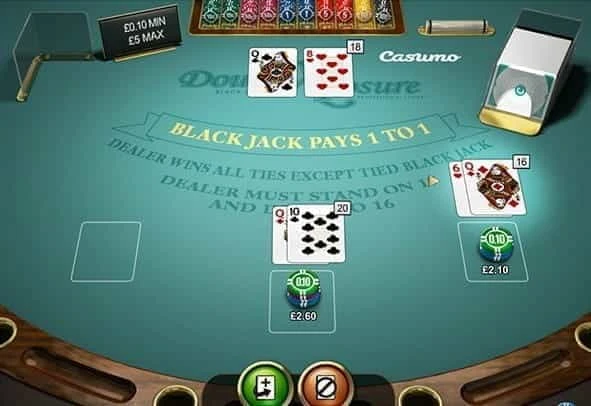
In the realm of Double Exposure, the realm of basic strategy unfurls a broader canvas. The gamut of optimal plays extends to every dealer’s two-card total up to 20. The labyrinth becomes more intricate, accommodating the nuances of dealer soft totals.
Decoding the Enigma: Navigating Double Exposure Basic Strategy
With the dealer’s soft 17 in mind, let us embark on an expedition into the realms of strategy, where hard and soft totals merge to chart a course to victory.
<Blackjack – Understanding the Basics of Blackjack Xchange>
Double Exposure Blackjack – Player Hard Totals Strategy:
- Hard 5, 6, or 7 – Armed with knowledge, discern the path: Double down against the dealer’s 14, 15, or 16 if permitted; in the absence of this privilege, opt to hit. Faced with other totals, heed the call to hit, encompassing even the realm of soft hands.
- Hard 8 – A crossroads presents itself: Double if the stars align, else embrace the path of the hit against hard 12-16. Emerge victorious against the rest.
- Hard 9 – The game unfolds with an invitation to double, provided the fates permit. Should this door remain closed, venture forth with a hit against hard 5, 6, and 12-16, surrendering to a hit against all other scenarios.
- Hard 10 – Should the blessings of the doubles materialize, seize the opportunity; otherwise, choose the path of the hit against hard 4-8, 12-16, and soft 14-16.
- Hard 11 – The realm of doubles beckons; heed its call if permitted. Failing this, tread the path of the hit against hard 4-9, 12-16, and soft 13-16.
- Hard 12 – Stand resolute against the tide, facing hard 4-6, 12-16, and soft 14-16. Surrender to the call of the hit against all other scenarios.
- Hard 13 – A choice echoes through the corridors of strategy: Stand firm against hard 4-6, 12-16, and soft 12-16. Embrace the path of the hit elsewhere.
- Hard 14 – A stand resonates against hard 4-6, 11-16, and soft 12-16, a testament to strategic wisdom. Emerge victorious against all other odds.
- Hard 15 – A parallel journey unfurls: Stand tall against hard 4-6, 10-16, and soft 12-16, yielding to the hit against alternate scenarios.
- Hard 16 – The call of standing resounds against hard 4-6, 8-16, and soft 12-16. A different tune plays elsewhere, urging the hit.
- Hard 17-20 – A singular exception graces this realm: Engage the hit if the dealer’s total can rival or match yours. A resounding hit rings out if you wield 19, regardless of the dealer’s 10-9 or Ace-8. Both scenarios mandate standing.
The Unconventional Twist: Unraveling Soft Totals Strategy
- Soft 13 – Traverse the realm, doubling if permitted; bow to the hit if this realm remains elusive against hard 12-16, surrendering to the call elsewhere.
- Soft 14 or soft 15 – The veil parts, revealing the path of doubling if the heavens permit; otherwise, the hit prevails against hard 6 and hard 12-16.
- Soft 16 or soft 17 – As the tapestry unfolds, seize the golden ticket of doubling when the stars align; if withheld, heed the siren call of the hit against hard 5, 6, and 12-16.
- Soft 18 – Amidst the choices, bask in the glory of the double, unless this realm eludes you. Against hard 4, 5, and 13-16, venture forth with a double; stand or surrender to the hit against hard 6 or 12. Stand strong against hard 7 or 17 and soft 17, embracing the hit against alternate scenarios.
- Soft 19 – Embrace the double if the cosmos favors, standing strong if denied. Yield to the hit against hard or soft 19 or 20, while standing firm elsewhere.
Double Exposure Blackjack – Navigating Uncharted Waters
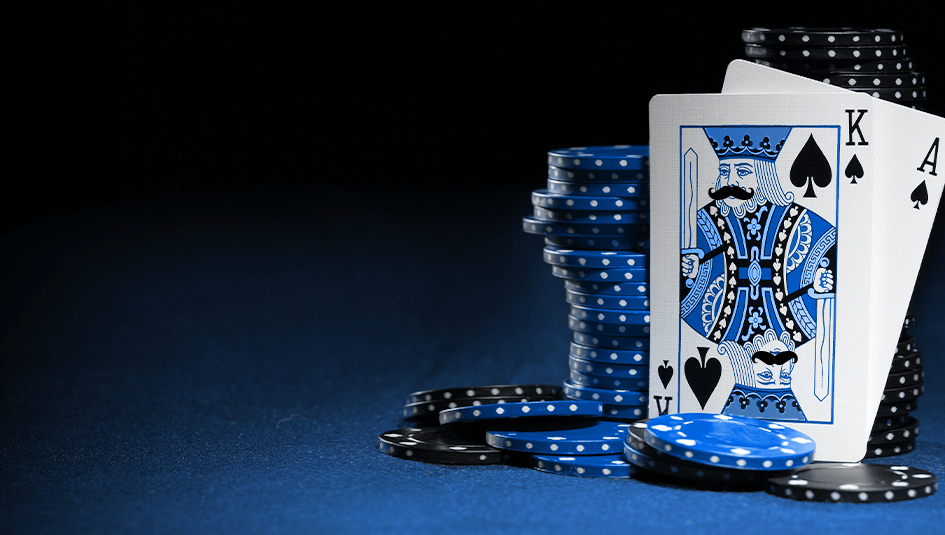
- Player has 2, 2 or 3, 3 – Split if the realm of split-after-split extends its hand, else embrace the hit against hard 4-5. Embrace the split against hard 6 and 12-17, while yielding to the call of the hit elsewhere.
- Player has 4, 4 – Navigate the tapestry with a split against hard 6 and 12-16; march to the beat of the hit in all other scenarios.
- Player has 5, 5 – Seize the moment with a split if the door to split-after-split stands ajar; else, let the clarion call of the double resound against hard 16. A divergence unfolds as the double beckons against hard 4-8, 12-15, and soft 14-16, yet the split yields to the call against hard 4-6.
- Player has 6, 6 – A complex dance ensues: Split against hard 4-6 and 12-17; stand tall against hard 14-16, yielding to the hit elsewhere.
- Player has 7, 7 – In the symphony of decisions, heed the call to split if the realm of split-after-split permits. Absent this, tread the path of the hit against hard 4. The echoes of the split resound against hard 5-6 and 12-17, while the stand beckons against hard 11 and soft 12-16. The hit, in turn, embraces the remaining scenarios.
- Player has 8-8 – Complexity reigns supreme as the standard “always split 8s” doctrine unravels. Split against hard 4-8 and 12-17 and soft 16-17, standing strong against hard 9-11 and soft 12-16. Bow to the call of the hit against hard 19-20 and soft 18-20.
- Player has 9-9 – Embark on the journey of the split against hard 4-6, 8, 12-16, 18, and soft 16-17. Find solace in the realm of the stand against the remainder, barring a hit against hard 19-20 and soft 18-20.
- Player has 10-10 – The path of the split unfolds against hard 13-16, while the stand stands triumphant against all other odds, save the clarion call of the hit against hard or soft 20.
- Player has Ace, Ace – The symphony of choices harmonizes with the universe: Split against hard 4-10 and 12-16, and soft 12-17. Should this constellation elude you, embrace the path of the hit.
Double Exposure Blackjack – A Unique Blueprint Unveiled
If the labyrinth of Double Exposure strategy appears intricate, it stands as a testament to the unique tapestry woven by this variant. Each decision point, each nuance, weaves a narrative beyond the norm. Embrace the chaos, for within its depths lies the promise of victory. The ties lose rule beacons, a riddle to be unraveled; the clash of 17s against 17s, 18s against 18s, 19s against 19s, and 20s against 20s presents a challenge worth embracing. As you step onto the battlefield of Double Exposure, equipped with this newfound wisdom, may the cards fall in your favor.
<Blackjack Strategy – How to counter the dealer’s upcard of 7>



